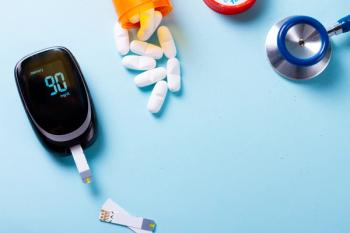
- Drug Topics February 2018
- Volume 162
- Issue 2
Pharmacists Are the Vitamins of Healthcare
The Father of Vitamins was an incredibly important person who went unthanked-just like pharmacists.
We all like to take quizzes, just like the good old days of pharmacy school.
First question: Who discovered the polio vaccine? That is an easy one (especially for us University of Pittsburgh alumni). Our beloved School of Pharmacy is housed in Salk Hall, named after Jonas Salk (1914-1995), who discovered the polio vaccine at Pitt in 1955.
Next question: Who discovered insulin? Most pharmacists will get this right too-Frederick Banting and Charles Best at the University of Toronto in 1922.
Our final question: Who is the “Father of Vitamins;” that is, who is credited with the discovery of vitamins as vital to the human body? No need for Google just yet! The answer is
More from Peter Kreckel:
In 1912, Funk wrote a book postulating that the diseases of beriberi, scurvy, pellagra, and rickets could be prevented with “vitamines.” His discovery led to the management of four disease states, all caused by improper nutrition. He is considered the Father of the Vitamin Movement. We have sections in our drug stores that are there due to the efforts of this little recognized researcher, who never received the Nobel prize, even though other vitamin researchers like Christian Eijkman, George Whipple, George Minot, and William Murphy did.
We pharmacists can relate to Funk. We go to our pharmacies, either in the community or hospital, working day after day, with little appreciation from our colleagues, supervisors, other healthcare professionals and, worst of all, the third-party payers. We are mandated to counsel patients in our community pharmacies, without compensation for our knowledge. It is just part of our job description.
When a nurse or physician demonstrates appropriate inhaler techniques in their office they can be compensated. The CPT Code is # 94664: “Demonstration and/or evaluation of patient utilization of an aerosol generator, nebulizer, metered dose inhaler, or IPPB device.” The reimbursement for this in-office demonstration is $18.00! When we dispense a Ventolin (albuterol) or Advair (fluticasone/salmeterol) in the pharmacy, we are glad just to break even as we dispense these expensive inhalers. We won’t even mention the DIR fees and claw-backs after the claim is adjudicated!
More from Peter Kreckel:
We pharmacists spend a lot of time in the vitamin aisle in our stores because we are experts in drug therapies that can cause vitamin depletion. We recommend vitamin B12 for our long-term metformin patients to treat or prevent diabetic peripheral neuropathy. We recommend folic acid for those considering pregnancy to prevent neural tube defects. We recommend calcium citrate, magnesium, and vitamin B12 for our numerous patients taking proton pump inhibitors. We, thanks to Casimir Funk, have a thorough understanding of the numerous diseases that are caused due to vitamin deficiency.
And like the not-too-famous Polish biochemist, we work hard every day with little recognition. We, however, can take great comfort with words of wisdom from Jonas Salk: “The reward for work well done is the opportunity to do more.” Think of that the next time you are spending precious time with a very anxious mother teaching her how to use her kid’s albuterol kit and spacer. There are lots of our patients who appreciate our expertise. We have a level of expertise in vitamin therapy that is unmatched by any healthcare profession.
Now all we need to do is get reimbursed for those interventions-especially when caused by prescription drug therapy.
Articles in this issue
over 7 years ago
Urinary Incontinence: What Pharmacists Should Knowover 7 years ago
Nutraceuticals: New Opportunities for Pharmacistsover 7 years ago
Pharmacists on the Front Line in Treating Cardiac Diseasealmost 8 years ago
Walgreens Teams Help Oncology Patientsalmost 8 years ago
The Obstacles That Impede Biosimilarsalmost 8 years ago
Months Later, Drug Shortages Still a Problemalmost 8 years ago
Patients Like Pharmacies That Give Preventive Carealmost 8 years ago
The New Type 2 Diabetes Technologies Pharmacists Need to Know Aboutalmost 8 years ago
The Value of a Pharmacistalmost 8 years ago
Tamper-Resistant Oxycodone Reduces Use by AbusersNewsletter
Pharmacy practice is always changing. Stay ahead of the curve with the Drug Topics newsletter and get the latest drug information, industry trends, and patient care tips.

























































































































































